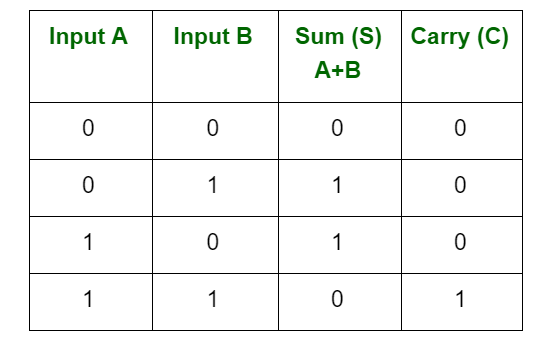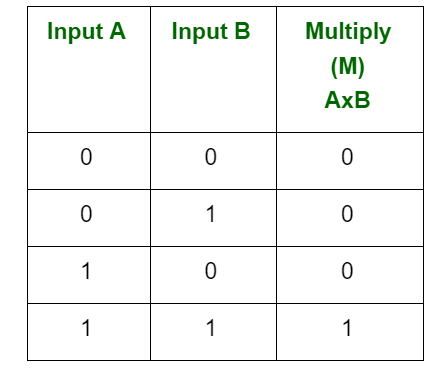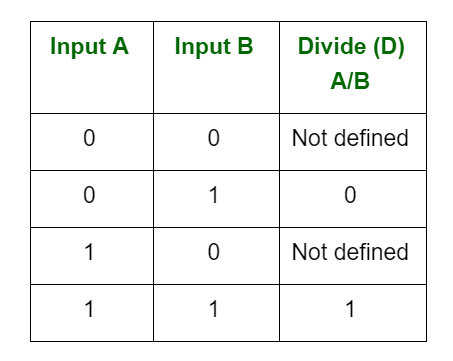Arithmetic Operations of Binary Numbers
Last Updated :
11 Jan, 2023
Binary is a base-2 number system that uses two states 0 and 1 to represent a number. We can also call it to be a true state and a false state. A binary number is built the same way as we build a normal decimal number.
Binary arithmetic is an essential part of various digital systems. You can add, subtract, multiply, and divide binary numbers using various methods. These operations are much easier than decimal number arithmetic operations because the binary system has only two digits: 0 and 1.
Binary additions and subtractions are performed as same in decimal additions and subtractions. When we perform binary additions, there will be two outputs: Sum (S) and Carry (C).
1. There are four rules for binary addition:

2. There are four rules for binary subtraction:
3. There are four rules for binary multiplication:

Multiplication is always 0, whenever at least one input is 0.
4. There are four parts in any division: Dividend, Divisor, quotient, and remainder.

The result is always not defined, whenever the divisor is 0.
Like Article
Suggest improvement
Share your thoughts in the comments
Please Login to comment...